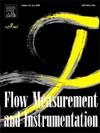Study of rheological vibration of high-pressure differential string multistage control valve
IF 2.3
3区 工程技术
Q2 ENGINEERING, MECHANICAL
引用次数: 0
Abstract
Coal chemical system is faced with high temperature, high pressure difference and large flow rate and other harsh conditions, and the control valve is a key control element in the whole coal chemical system. This study employs experimental methods to validate the numerical model accuracy and utilizes fluid-structure interaction analysis to investigate the vibration characteristics and underlying mechanisms of series multi-stage control valves. Set the inlet pressure to 18.7 MPa, the outlet pressure to 2.9 MPa, and the fluid is water, based on the flow characteristics of the string multi-stage valve under complex working conditions. The vibration characteristics of the valve under five different openings are compared and analyzed, and the resonance response of the intrinsic frequency and modal frequency are studied. The results show that the maximum deformation of the valve reaches 0.011763 mm at 80 % opening; the maximum stress intensity value can reach 199.7Mpa, which has the risk of fluid impact damage; The valve opening directly affects the flow rate and fluid velocity. When the opening is small, the fluid velocity increases, which can easily lead to turbulence and vortex formation, thereby inducing vibrations. Conversely, when the opening is large, the fluid velocity decreases, resulting in smoother flow and reduced vibrations. The vibration damage caused by the tandem multistage regulating valve is mainly due to the influence of vibration positive stress. The location of stress and deformation changes will not change with the change of opening, while the change of opening has a significant effect on the stress value and deformation value. The resonance frequency of the control valve is about 671HZ at low frequency, which has a greater impact on the upper valve body and valve stem. To provide a research basis for the study of vibration and noise reduction of string type multistage control valve.
高压差压管柱多级控制阀流变振动研究
煤化工系统面临高温、高压差和大流量等恶劣工况,控制阀是整个煤化工系统中的关键控制元件。本研究采用实验方法验证了数值模型的准确性,并利用流固耦合分析研究了串联多级控制阀的振动特性及其机理。根据管柱多级阀在复杂工况下的流动特性,设置进口压力为18.7 MPa,出口压力为2.9 MPa,流体为水。对比分析了阀在5种不同开度下的振动特性,研究了阀的固有频率和模态频率的共振响应。结果表明:当开度为80%时,阀的最大变形量为0.011763 mm;最大应力强度值可达199.7Mpa,具有流体冲击损伤的风险;阀门开度直接影响流量和流体速度。当开度较小时,流体速度增大,容易引起湍流和涡流的形成,从而引起振动。相反,当开度较大时,流体速度减小,导致流动更平稳,振动减少。串列式多级调节阀的振动损伤主要是由于振动正应力的影响。应力和变形变化的位置不会随开度的变化而变化,而开度的变化对应力值和变形值有显著的影响。控制阀的低频共振频率约为671HZ,对上阀体和阀杆的影响较大。为管柱式多级控制阀的减振降噪研究提供研究依据。
本文章由计算机程序翻译,如有差异,请以英文原文为准。
求助全文
约1分钟内获得全文
求助全文
来源期刊

Flow Measurement and Instrumentation
工程技术-工程:机械
CiteScore
4.30
自引率
13.60%
发文量
123
审稿时长
6 months
期刊介绍:
Flow Measurement and Instrumentation is dedicated to disseminating the latest research results on all aspects of flow measurement, in both closed conduits and open channels. The design of flow measurement systems involves a wide variety of multidisciplinary activities including modelling the flow sensor, the fluid flow and the sensor/fluid interactions through the use of computation techniques; the development of advanced transducer systems and their associated signal processing and the laboratory and field assessment of the overall system under ideal and disturbed conditions.
FMI is the essential forum for critical information exchange, and contributions are particularly encouraged in the following areas of interest:
Modelling: the application of mathematical and computational modelling to the interaction of fluid dynamics with flowmeters, including flowmeter behaviour, improved flowmeter design and installation problems. Application of CAD/CAE techniques to flowmeter modelling are eligible.
Design and development: the detailed design of the flowmeter head and/or signal processing aspects of novel flowmeters. Emphasis is given to papers identifying new sensor configurations, multisensor flow measurement systems, non-intrusive flow metering techniques and the application of microelectronic techniques in smart or intelligent systems.
Calibration techniques: including descriptions of new or existing calibration facilities and techniques, calibration data from different flowmeter types, and calibration intercomparison data from different laboratories.
Installation effect data: dealing with the effects of non-ideal flow conditions on flowmeters. Papers combining a theoretical understanding of flowmeter behaviour with experimental work are particularly welcome.
 求助内容:
求助内容: 应助结果提醒方式:
应助结果提醒方式:


